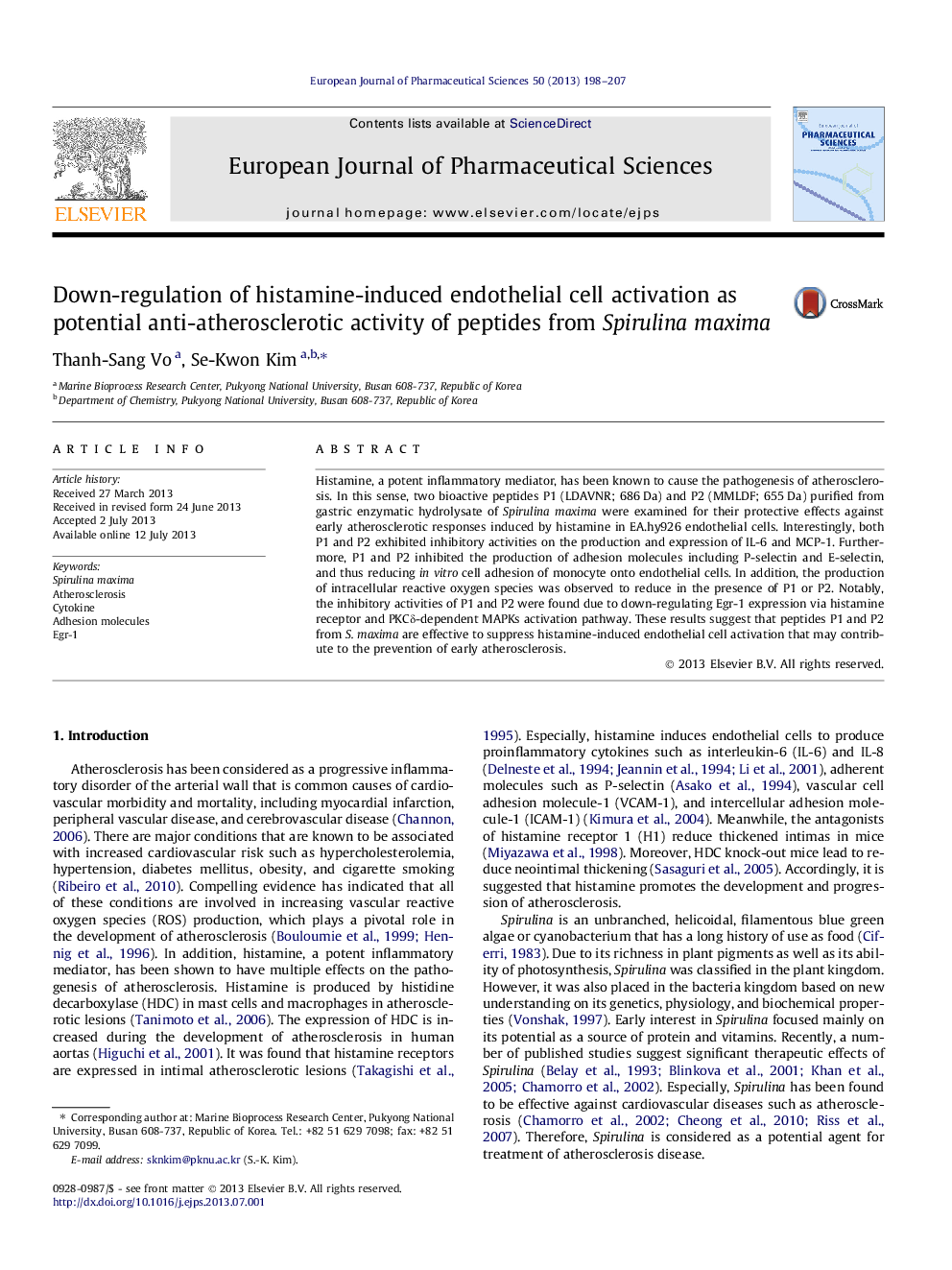| Article ID | Journal | Published Year | Pages | File Type |
|---|---|---|---|---|
| 5810072 | European Journal of Pharmaceutical Sciences | 2013 | 10 Pages |
Histamine, a potent inflammatory mediator, has been known to cause the pathogenesis of atherosclerosis. In this sense, two bioactive peptides P1 (LDAVNR; 686 Da) and P2 (MMLDF; 655 Da) purified from gastric enzymatic hydrolysate of Spirulina maxima were examined for their protective effects against early atherosclerotic responses induced by histamine in EA.hy926 endothelial cells. Interestingly, both P1 and P2 exhibited inhibitory activities on the production and expression of IL-6 and MCP-1. Furthermore, P1 and P2 inhibited the production of adhesion molecules including P-selectin and E-selectin, and thus reducing in vitro cell adhesion of monocyte onto endothelial cells. In addition, the production of intracellular reactive oxygen species was observed to reduce in the presence of P1 or P2. Notably, the inhibitory activities of P1 and P2 were found due to down-regulating Egr-1 expression via histamine receptor and PKCδ-dependent MAPKs activation pathway. These results suggest that peptides P1 and P2 from S. maxima are effective to suppress histamine-induced endothelial cell activation that may contribute to the prevention of early atherosclerosis.
Graphical abstractDownload high-res image (68KB)Download full-size image
